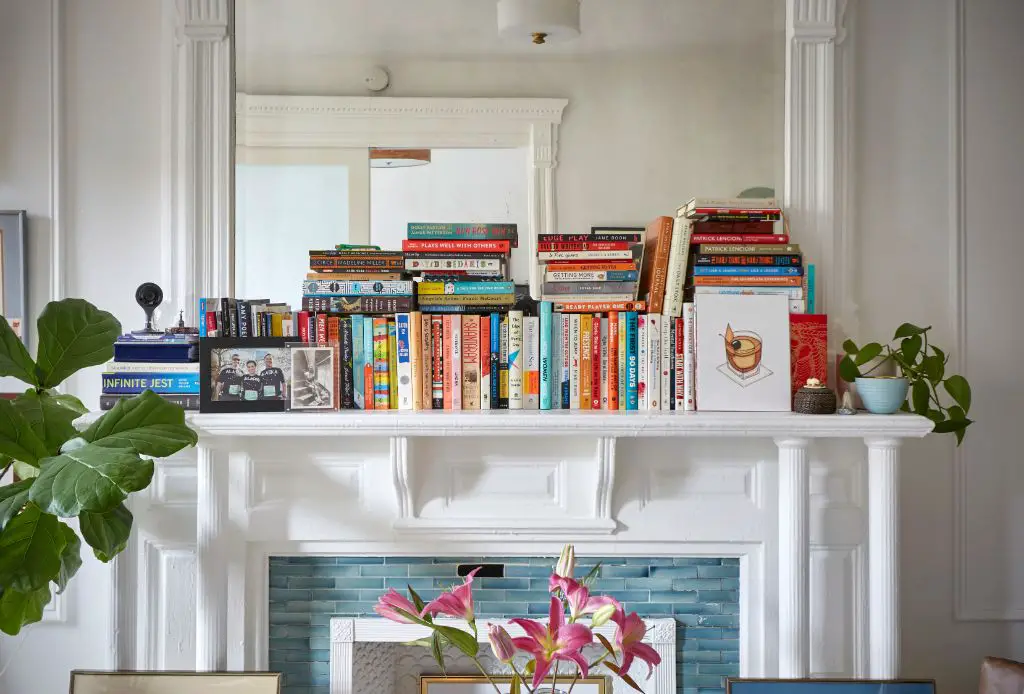Are Bookshelves Still In Style?
In today’s digital age, the humble bookshelf has endured. While e-readers and tablets now dominate reading habits, printed books still hold a special place in many homes. Bookshelves continue to serve dual purposes of storage and décor. Their styling may have evolved, but bookshelves remain an iconic interior design element.
This article explores the evolving role of bookshelves. We’ll look at popular styles through history and today, along with tips for integrating bookshelves into different aesthetics. While bookshelves may seem old-fashioned to some, they can elevate any space when styled thoughtfully. Read on to discover if the trusty bookshelf still deserves a coveted spot in modern interiors.
History of Bookshelves
Bookshelves date back to ancient times and have evolved over thousands of years. The earliest known bookshelves date back to ancient Rome and Greece, where wooden shelves and cabinets were used to store scrolls in private libraries and archives (Source). In medieval Europe, monasteries were centers of knowledge and book production, housing manuscripts on lecterns and shelving (Source).
By the Renaissance era, the growing interest in learning and humanism led to an increased demand for books. Intricately carved bookshelves and display cases became a feature of private studies. The 16th century saw the construction of shelved galleries at Oxford University, which are considered the earliest examples of dedicated library bookstacks (Source).
In the 18th century, bookshelves evolved into freestanding furniture pieces as part of home decor. Styles like Chippendale bookcases became popular. The 19th century brought innovations like cast iron stacks and compact revolving bookcases. By the 20th century, mass production enabled affordable bookshelves to reach the masses.
Benefits of Bookshelves
Bookshelves offer many benefits beyond simply storing books. Three of the main advantages of bookshelves include aesthetic appeal, storage, and organization.
Bookshelves add an undeniable visual appeal to any space where they are displayed. The rows of book spines in a variety of colors and sizes create an eye-catching texture on the wall. Bookshelves make for great decorative focal points and can establish the aesthetic in a room, whether it’s classic, modern, or eclectic. They bring warmth, personality and a sense of sophistication to any décor style.
In addition to looks, bookshelves provide valuable storage space. They maximize the usage of wall space that would otherwise go unused. Books are bulky items that take up a lot of room, so getting them up off other surfaces and consolidated onto shelves helps keep the rest of the space tidy. Bookshelves allow books to be prominently displayed in an organized fashion rather than being tucked away in boxes.
Lastly, bookshelves allow for books and other items to be organized neatly. Shelves can be labeled with categories or arranged alphabetically. This organization system makes it much easier to find the exact book you need. The shelves constrain the books upright and prevent them from toppling over into a messy pile. Open shelves allow you to scan titles quickly to locate what you need.
[1]
[2]
Bookshelves for Decor
Bookshelves can serve as decorative focal points and transform any space into a visually appealing area. When styled and arranged properly, bookshelves showcase cherished books and decor in an artful, aesthetic manner. Bookshelves allow for self-expression through personalized designs and creative vignettes. According to BH&G, decor often comes from items already at home. Rethink household objects as decor elements for bookshelves. Frames, vases, baskets and more make beautiful accents against a backdrop of vibrant book bindings. Arrange objects and books based on color, texture and size for visual impact. An organized, balanced display lends a polished feel. For interest, mix and match books vertically and horizontally. Taper objects by height or stack a series. Houseplants, candles and artwork enliven bookshelves, transforming them into an art installment.
Popular Bookshelf Styles
Built-in bookshelves date back to ancient times when homeowners would choose to have them integrated into the architectural design of their home. Built-ins create a polished, finished look that makes your book collection a focal point. They can be customized to fit any space perfectly. However, they do require professional installation.
Freestanding bookshelves are a popular and versatile option. These pre-assembled bookshelves come in endless shapes, sizes and finishes to suit any decor. They are easy to assemble and rearrange. Different styles like ladder, corner and cube can maximize storage in any space. Ladder bookshelves are ideal for small spaces, corner units make use of empty corners, and cube shelves can be stacked creatively. Freestanding bookshelves from retailers like IKEA and Target offer affordable options.
Floating bookshelves mounted on the wall are a great modern, minimalist option. They create the illusion that your books are floating in midair. Floating shelves come in varied materials like wood, metal and acrylic. They allow you to creatively display books alongside decor objects.
Books as Decor
Using books as decor on bookshelves has become an increasingly popular styling technique. While bookshelves used to be purely functional – storing and organizing books – they are now viewed by many as an opportunity to add visual interest through book arrangements. Books can be arranged by color, size, or subject to create cohesive yet dynamic displays. Books with colorful, textured, or patterned spines stand out when grouped together. Series books and matching editions make for satisfying uniformity. Large books, small books, and objects like bookends help add variation to the look.
Some tips for using books as decor:
- Utilize books vertically and horizontally to break up visual monotony
- Incorporate objects like framed photos, vases, bowls, candles, plants etc to add visual appeal
- Arrange books based on patterns, textures, and colors
- Add pops of color using bright books, bookends or backdrops
- Keep it neat and orderly, trimming book collections as needed
- Dust books regularly and rearrange as desired
Well-styled bookshelves can reflect personal interests and tastes, showcase collections, and inject personality into a space. Books as decor have moved bookshelves solidly into the realm of home decor.
Digital Age Effects
The rise of e-books and digital reading has had some interesting impacts on the use of bookshelves in home decor. While some predicted the demise of physical books, print books have continued to maintain a strong presence in many homes (Source). However, with more reading being done on tablets, e-readers and phones, the number of print books people own has declined. This means bookshelves are often not filled to capacity anymore.
Rather than mark the end of bookshelves, the digital age has opened up new possibilities. With fewer books to store, there is more flexibility in how shelves are styled and decorated. Bookshelves are increasingly used to display decorative objects, photos, art and collectibles, not just books. The books that remain carry more sentimental value in print and are chosen with care to reflect the owner’s personality and interests. Bookshelves in the digital age showcase curated book collections, not just practical storage solutions.
Minimalist Approach
The minimalist design trend has extended to bookshelves and shelving as well. Minimalist bookshelves emphasize clean lines, neutral colors, and lots of open space. There are several pros and cons to consider with the minimalist bookshelf approach:
Pros:
– Allows books and accessories to stand out
– Creates a calm, uncluttered look
– Fits with minimalist home decor
– Options like floating shelves are modern and sleek
Cons:
– Limits storage and functionality
– Can seem cold or sterile
– Floating shelves require proper installation
– Books and items need to be styled carefully to avoid looking sparse
Overall, minimalist shelving allows the focus to remain on the books themselves, rather than the shelves. However, it requires thoughtful styling and may not suit those with large collections or lots of display items. The minimalist look works best in small doses or when balanced with some decorative elements. See examples at https://www.pinterest.com/lasesana/minimalist-bookshelves/.
Tips for Styling

Books have been a staple in homes for centuries. While their purpose remains the same, the way we style books and bookshelves has evolved with changing trends. Here are some tips for styling your bookshelf in a fashionable way:1
Focus on creating visual interest by mixing and matching books of different heights, colors, and textures. Tall books can go on the bottom shelves, while smaller books sit at eye level or higher. Try organizing by color to create a cohesive palette.
Leave space between books so they don’t appear cluttered. Rounding out the edges creates a cleaner look. Place decorative objects like vases, frames or candles between books to add personality.
Illuminate your bookshelf with lighting fixtures or lamps. Accent lighting creates a focal point and highlights your favorite titles. Sconces or picture lights work well.
Display your books horizontally with their spines facing inwards to highlight the pages instead. This eye-catching technique puts the imagery and text on the cover on full display.
Mount your shelves at varying heights for a more dynamic look. Stagger them up the wall or stack squares on top of rectangles. This adds visual interest and allows you to get creative with vignettes.
With some thoughtful styling, bookshelves can become a stylish focal point that expresses your personality while keeping books accessible. Follow these tips to fashionably display your favorite reads.
Conclusion
In summary, bookshelves can still be a very stylish and useful element in home décor and organization. While the prominence of physical books has diminished somewhat in the digital age, bookshelves continue to serve both practical and aesthetic purposes. With numerous styles to choose from like built-ins, ladder shelves, and more, bookshelves can complement any design aesthetic. They provide attractive displays for books, decorative objects, plants, photos, and collectibles. For book lovers, shelves make books accessible and prominently displayed as decorative art objects. Even in minimalist interiors focused on decluttering, stylish and edited bookshelves add personality. With clever styling involving artful arrangements, books of varying sizes, bookends and layered decor, bookshelves remain a timeless and versatile way to store books while elevating the visual interest of any room.



